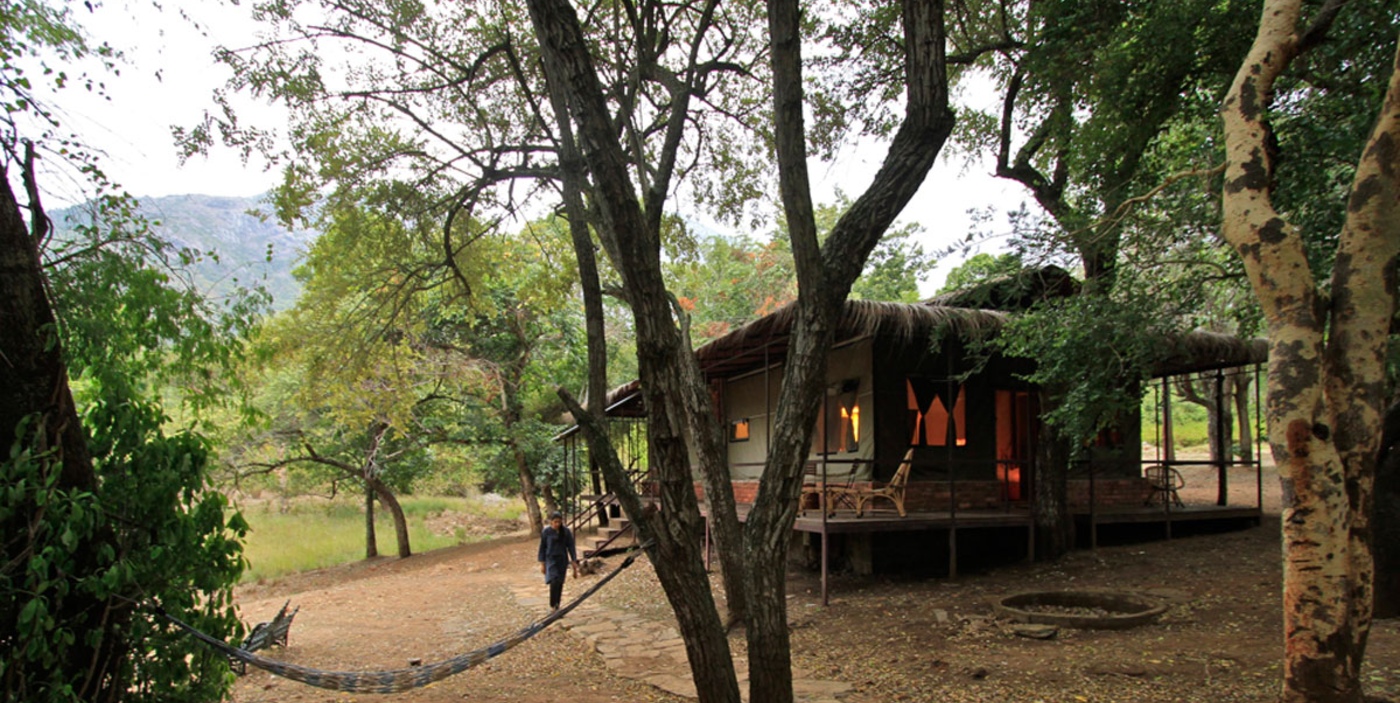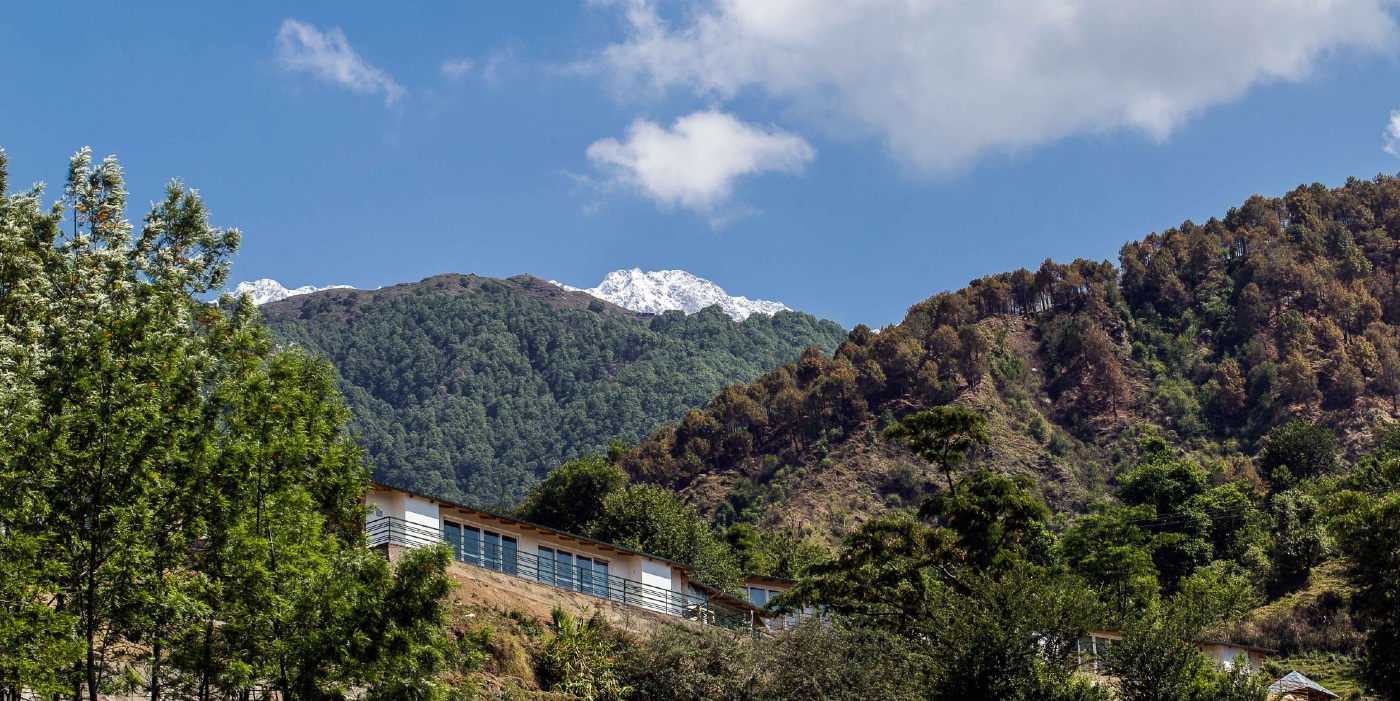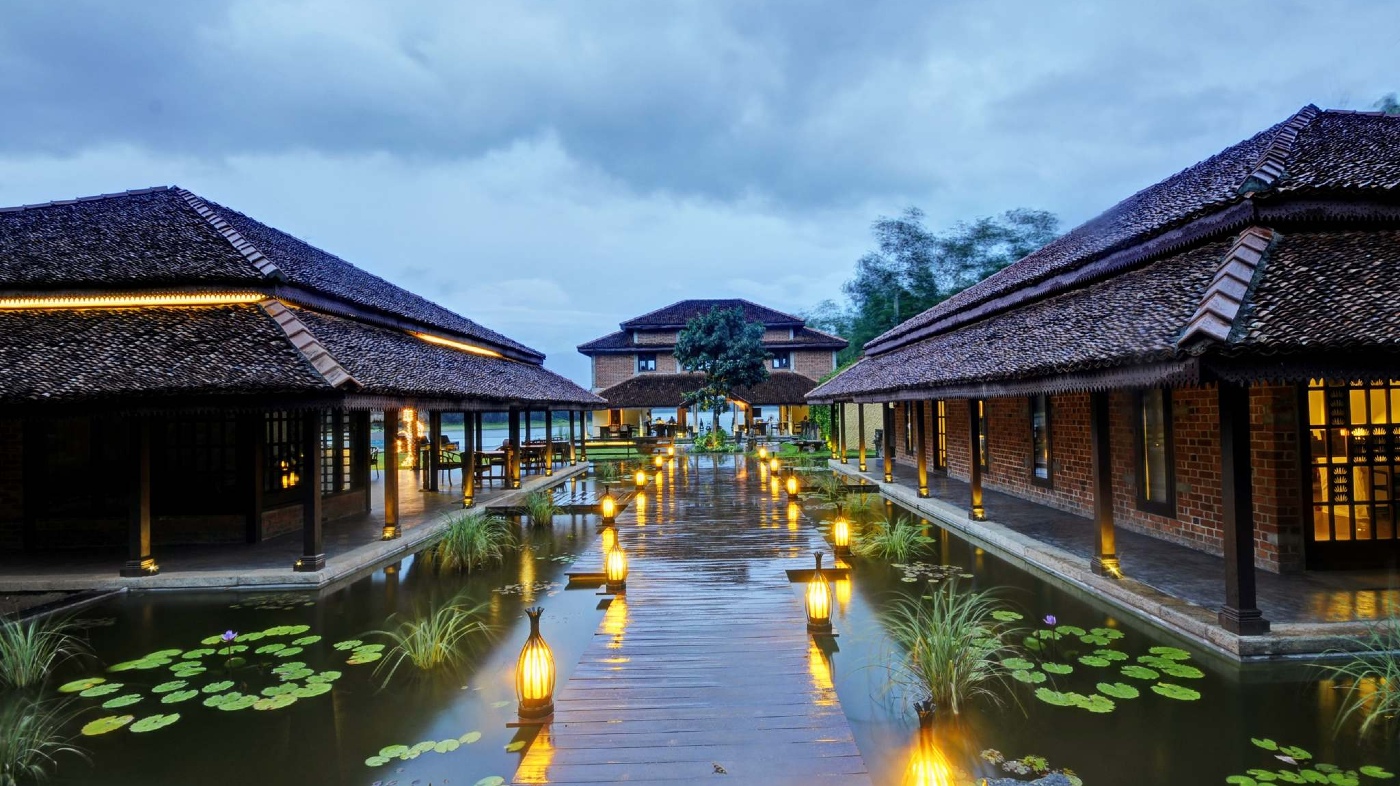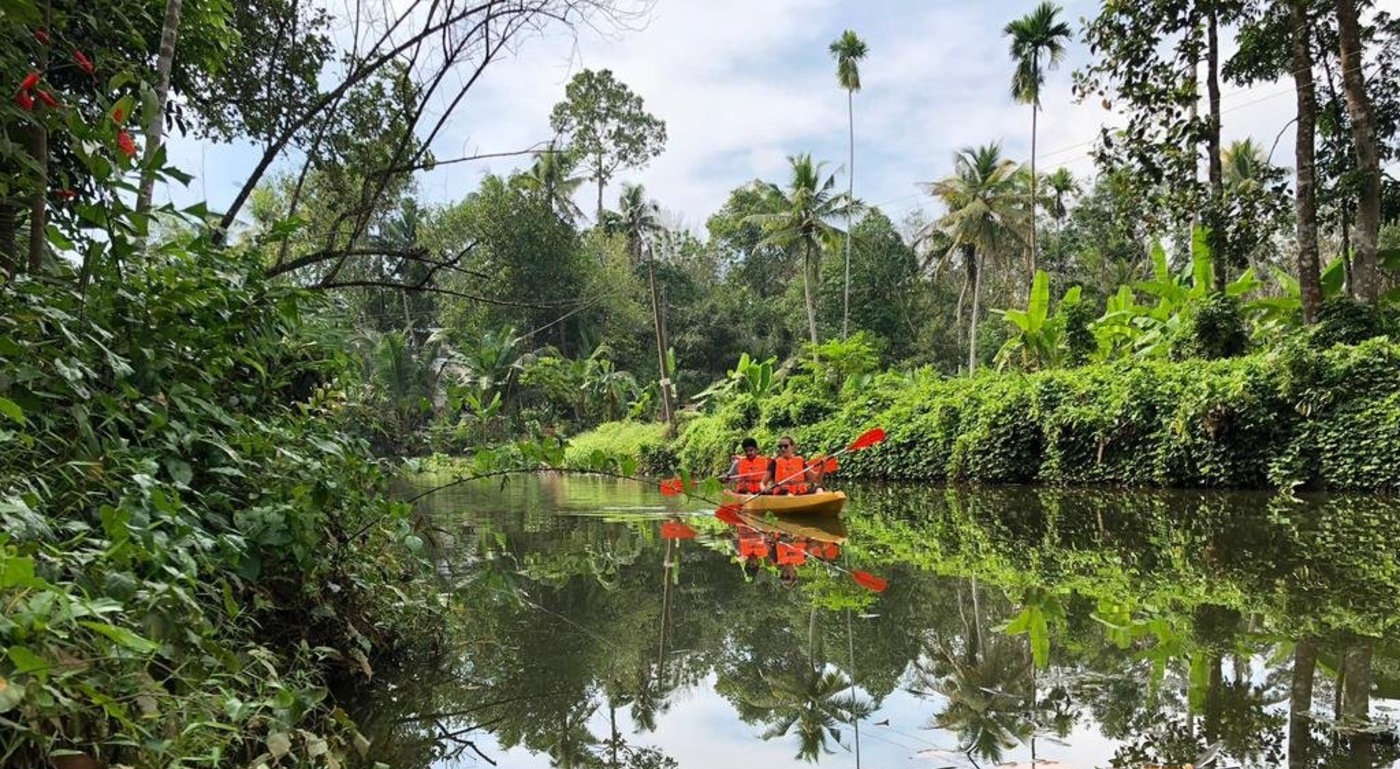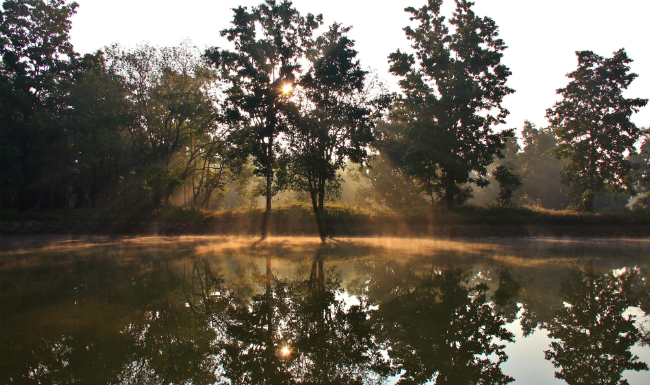
A wildlife camp near Kanha National Park, Madhya Pradesh
Fall in step with the rhythms of the jungle at this low-impact wildlife camp set right in Kanha National Park’s buffer zone. No fence separates the Kipling Camp’s 25-acre property from the surrounding forest. So a guest there becomes, in a way, a part of the forest—unobtrusively watching the shenanigans of the jungle’s true residents, from deer and babblers to leopards and tigers. The 36-year-old camp, established and run by conservationists, is also home to Tara, the beloved star of Mark Shand’s best-seller ‘Travels on my Elephant’. Guests get to spend quality time with the celebrity elephant, bathing and scrubbing her in the nearby Banjar River.
Safaris at Kanha are a given, but there’s more to do at Kipling like going birding or getting to understand the lives of the villagers by visiting villages and local markets and experiencing the songs and dances of Baiga artists at the Camp. Or you could sprawl out under the Mahua tree on Kipling’s grounds with a book from the Camp’s library. You can do anything as long as you are following the Camp’s motto—“treading softly in the jungle”.
Price: Rs 12,000 - to Rs 26,400 (excluding GST of 18%). Tariff includes accommodation, all meals, experienced naturalists, bird watching walks, local excursions, picnics and time with elephant 'Tara'.
Read More: https://www.kiplingcamp.com/
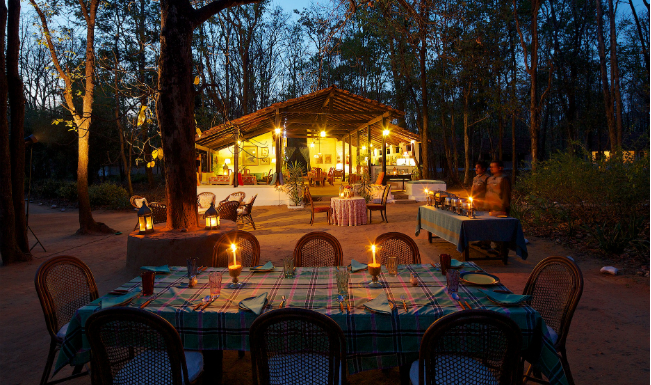
Slow Travel
Much of the space at the Camp has been set apart as a sanctuary for wildlife. The built structures in the Camp follow the local style of architecture and little cement has been used. The Camp draws water from three eco-friendly open wells and no bore wells have been dug. The property has also not introduced high-impact comforts like swimming pool, landscaping, televisions in each room or plastic water bottles. The Camp takes its environmental responsibility seriously, from using solar lights to light up the pathways to opting for only legally procured wood for campfires and cardboard and twigs to heat water. The staff is from the local community and the Camp has deep ties with the villages around, working with them closely for wildlife conservation and also ensuring higher income for the communities by hosting their artists and showcasing their handicrafts.




